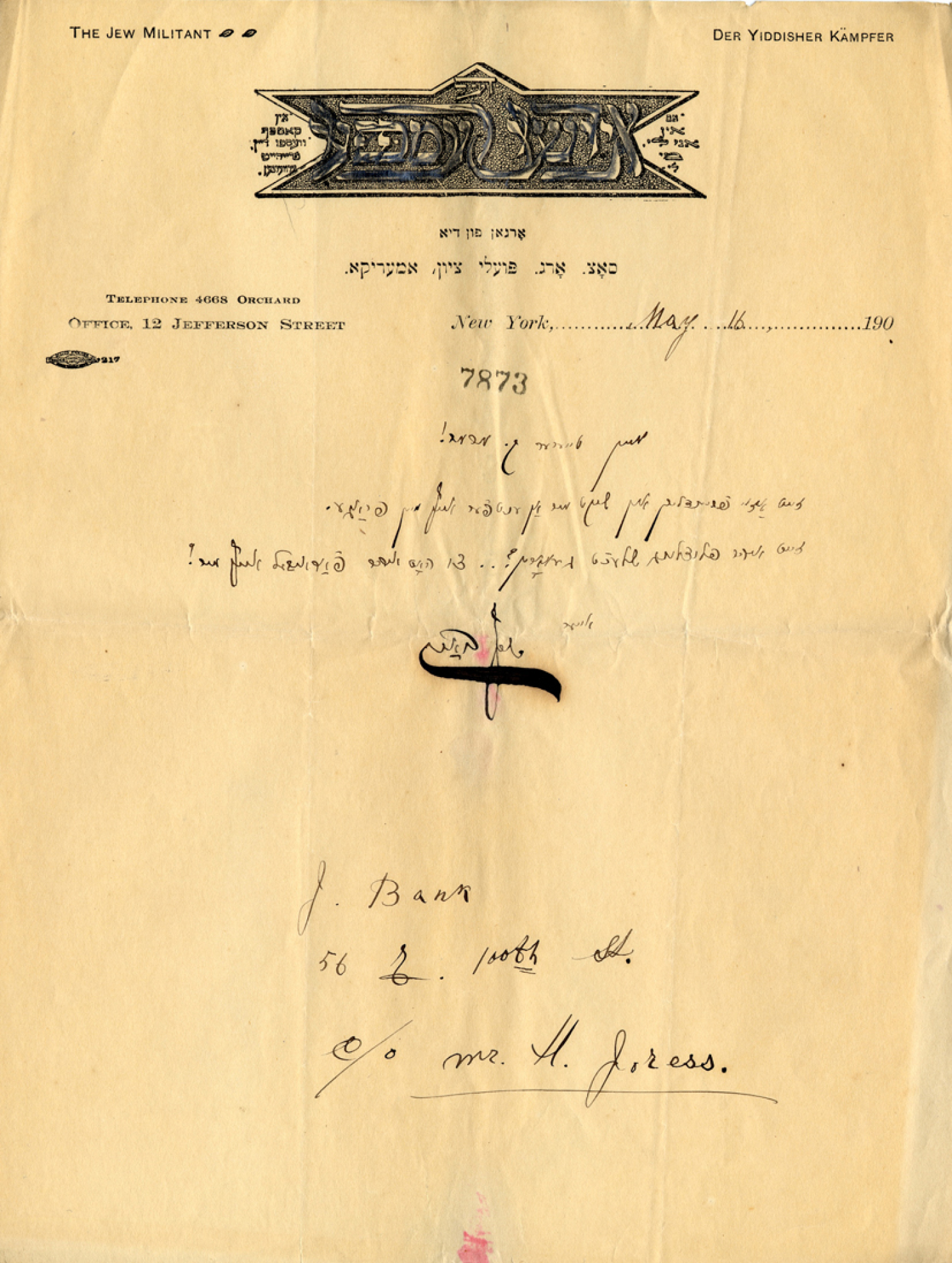Di gantse velt af a firmeblank: The World of Jewish Letterheads
Assemble the letterheads of Jewish organizations, institutions, and individuals in Europe, North and South America, and Palestine from the 1890s to the eve of World War II in 1939 and you have a portrait of the Jewish world: transnational; diverse in language, political, and religious orientation; and flourishing.
Di gantse velt af a firmeblank (The Whole World on a Letterhead) is an experiment in building that portrait. Here, we hope to bring you every week, a different example of letterhead from a single collection in the YIVO Archives, the Papers of Kalman Marmor.
Marmor, a Yiddish writer and cultural activist, was born October 11, 1879 in Mayshigola, Vilna Gubernia (today Maišiagala, Lithuania). In 1906, he settled in the U.S. Initially active with the Labor Zionist movement, he later became a Communist. He was an organizer of the 1937 World Yiddish Culture Congress, cultural director of the International Workers Order, and a contributor to the Communist Yiddish newspaper, Morgn Frayhayt. Between 1933 and 1936, he lived in Kiev, where he worked at the Institute of Jewish Proletarian Culture and prepared scholarly editions of the work of American Yiddish poets and writers. During Stalin’s Great Terror, the Institute was liquidated, and much of its leadership was arrested and executed. Marmor, an American citizen, returned to the U.S. He died in Los Angeles in 1956.
His papers at YIVO contain several thousand letters from the turn of the 20th century to the 1950s. He had an astonishingly diverse array of correspondents, not limited to Zionist and Communist activists.

A short note from Joseph Bank of Der yidisher kemfer, New York, to Kalmen Marmor, May 16, 190 [?]. (RG 205, Folder 97)
Der yidisher kemfer (Jewish Fighter, here translated as “The Jew Militant”) was the journal of the Yidisher natsyonaler arbeter farband (Jewish National Workers Alliance), a Yiddish-speaking Labor Zionist organization in North America affiliated with the Po’ale Tsiyon party). This letter apparently dates from the first incarnation of the publication (The Jewish Communal Register of New York City, 1917-1918 notes that Der yidisher kemfer was established in 1907, discontinued, and then revived in 1916).
On the masthead are two slogans: (right, in Hebrew) Hillel’s famous dictum, “If I am not for myself, then who will be for me?” and (left, in Yiddish) “You will win your freedom by fighting for it.” At the time this letter was written, the publication had offices on the Lower East Side on Jefferson Street. The stationery was printed by a union shop (see union bug at left), as appropriate for a Labor Zionist organization.
Bank wonders why he hasn’t had a reply to an earlier letter. Has something bad befallen Marmor? Is he angry at him about something? He provides a home address on East 100th Street in Harlem.
Series curated by Roberta Newman; Images digitized by Vital Zajka.